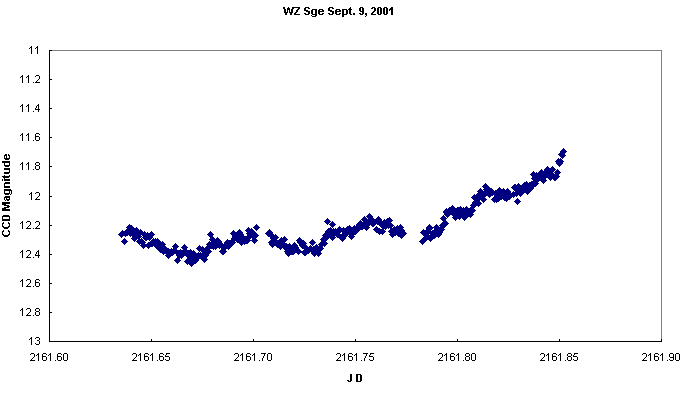WZ Sge Outburst
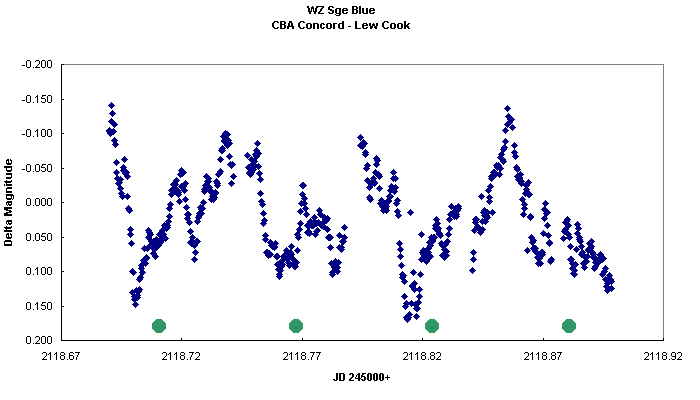
Blue filtered observations of WZ Sagittae on July 28, 2001. Data points are 16 second CCD frames taken every 25 seconds. Data reduced with AIP4WIN software and AIP4Plot.xls (available here).
Data from the following night is shown below. The star continues its violent flickering. Predicted times of eclipses are shown by green dots. These intervals mark the period of the binary.
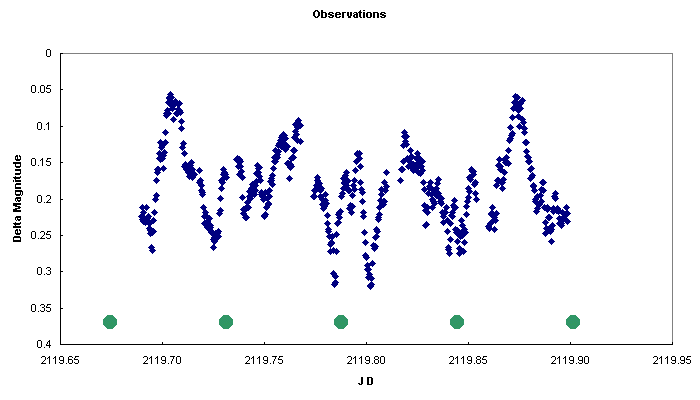
Data ws collected on Aug 3, 2001 where the star was not flickering significantly as it had been the weekend before.
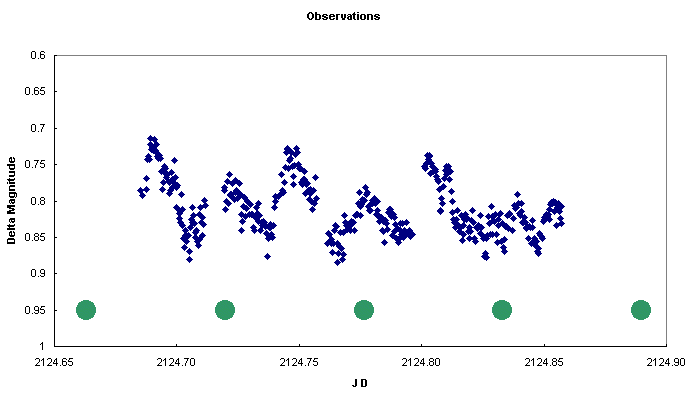
Data collected on the following night also showed no significant flickering, but the observing run was cut short by low clouds rolling in from the Pacific coast. THe data is shown on the same scale as the previous night for ease of comparison.

The following night was cloud free and the star showed regular humps (reported now to be super humps, but this run is too short to determine if their period is different from the orbital period.
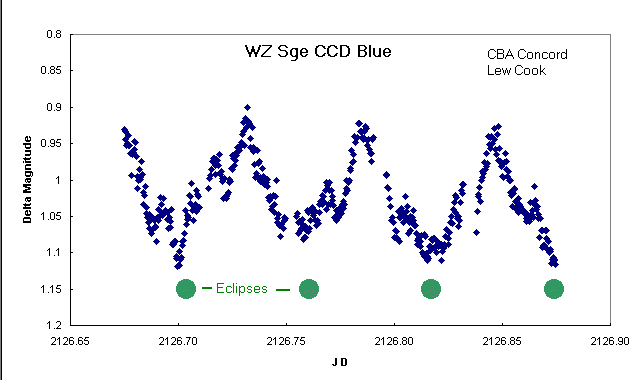
Following a break, the star was observed on JD 2452138 - at a considerably fainter stage than before. This rapid fading had also been seen in the 1978 outburst and it was a temporary phenomenon then. There is not much activity in the star, and the general fading trend is evident. The start of the run was delayed slightly when the old 386 computer that runs the guiding camera failed and was replaced with a 486, also an old machine.
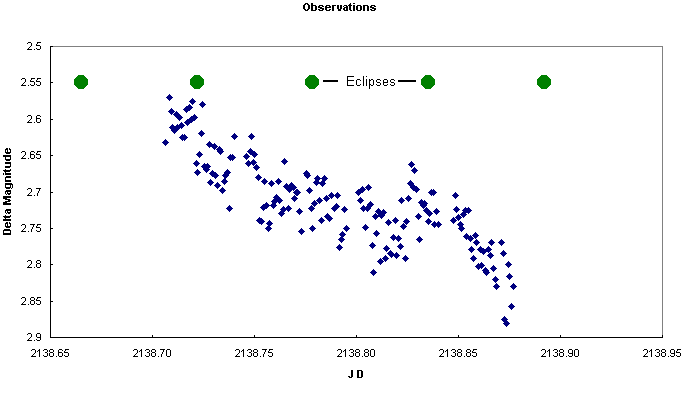
The data above was the last of the blue data. The CCD chip is insensitive in the blue end of the spectrum and since the star has faded, the long exposures necessary (1 minute exposures) tend to lose time resolution. That coupled with the scatter attendant in the faintness of the star makes the data set of marginal quality. Further observations will be done with shorter exposure times and through a clear filter.
The image below was obtained August 18, 2001 UT. IExposures were 30 seconds through a clear filter. The magnitude of the star is UNCORRECTED for the presence of the fainter companion to WZ Sge which was measured along wiht the variable star.
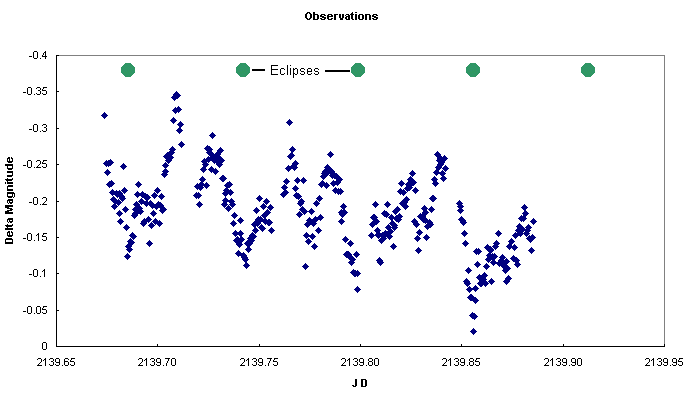
Indicative of how quickly this star changes in its temperament, the humps on the next night (below) August 19, 2001, were strongly developed and the overall declining trend has reversed. Now the star shows a slight increase in its brightness both in the faintest levels as well as in the bright peaks.
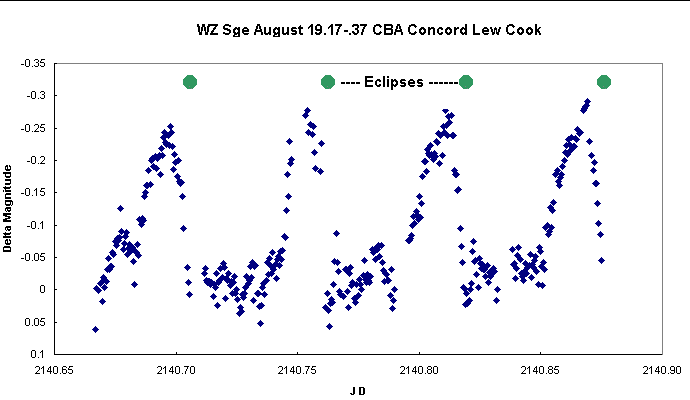 Has WZ Sge "turned the corner" and is it now re-brightening? It looks that way.
Here is the data from the last 2 nights above plotted together in an instrumental all-sky magnitude system (preliminary, subject to revision) with the contamination of the close companion to WZ Sge removed:
Has WZ Sge "turned the corner" and is it now re-brightening? It looks that way.
Here is the data from the last 2 nights above plotted together in an instrumental all-sky magnitude system (preliminary, subject to revision) with the contamination of the close companion to WZ Sge removed:
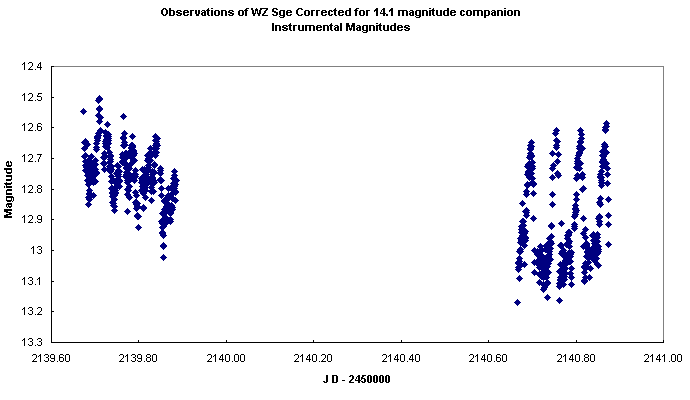
August 25 saw the star fading with small humps and shallow but sharp eclipses.
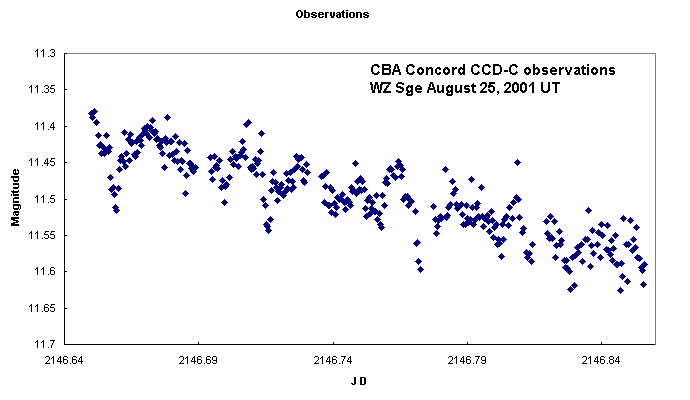
On August 26, 2001 UT the star brightened rapidly:
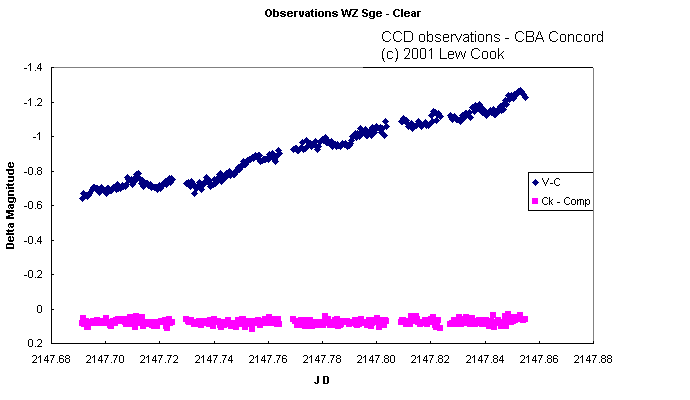
It increased by over half a magnitude in only 4 hours. This curve has NOT been adjusted for the added light of the close companion. That modification will be posted to this page shortly using the spreadsheet Nemesis.xls, available from Lew's CCD Project page linked below.
When the extraneous light from the WZ Sge companion is removed, we see that the variation actually was larger than is shown in the plot above (as expected)- the increase in brightness is about 0.8 magnitude in 4 hours, a quick rise suggestive of a dwarf nova outburst.
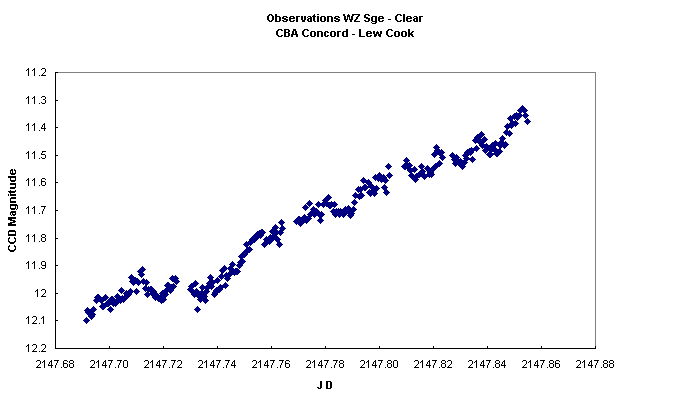
And it is easy to appreciate the rapidity of the rise in brightness when you see those 2 nights together:
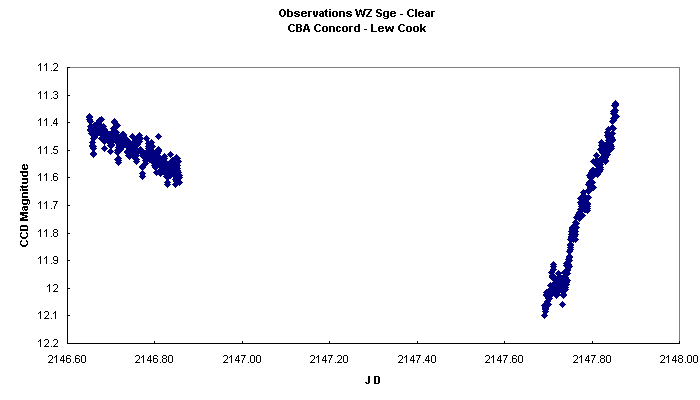
Following a few days off, the star was again followed for a week. This data - including the 2 nights above - is presented below. There were the continuing minor variations involving humps and eclipses with the gross brightenings and slower fadings going on. The up and down pattern (seen as pieces of an overall fading trend) shows the result of numerous outbursts and declines.
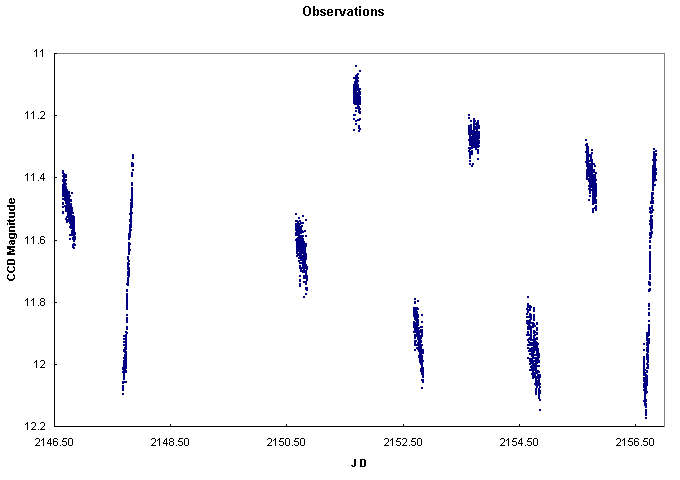
Similar to the rise observed 10 days previously, another rise was captured on September 4.2 UT:
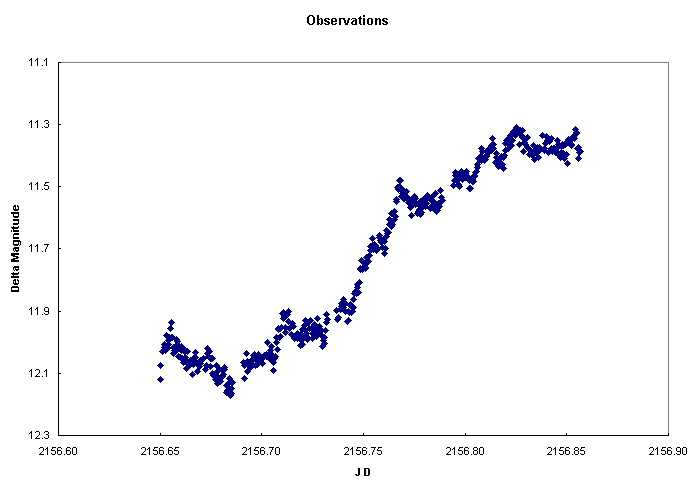
There have been several re-brightenings and gradual fadings of WZ Sge over the prior several weeks. It appears to be in a repetitive outbursting mode, similar to V803 Cen as observed by Patterson, et al, 2000 (PASP 112, 625)
Similar behavior may have been captured on September 9, 2001 UT.
